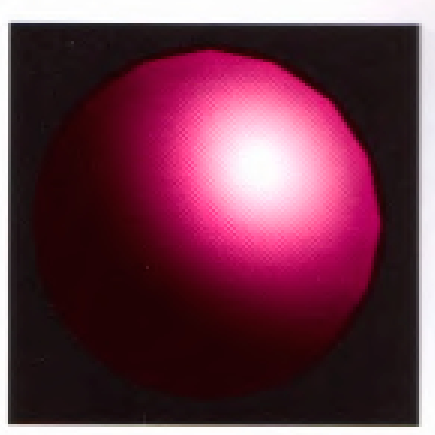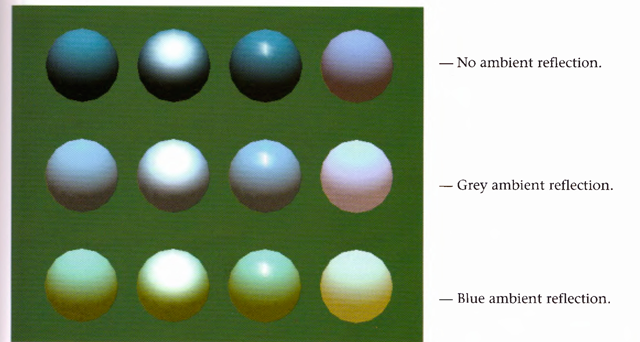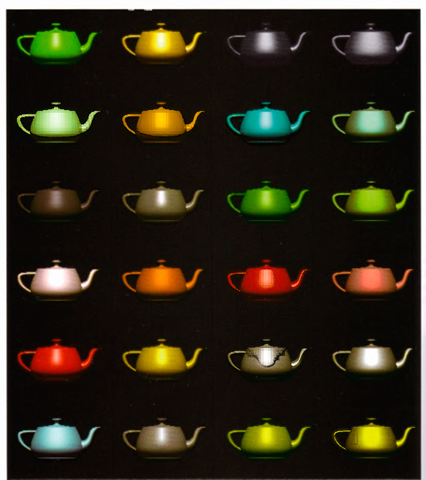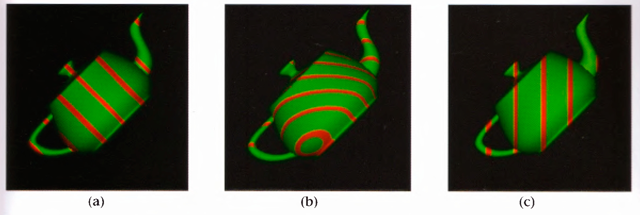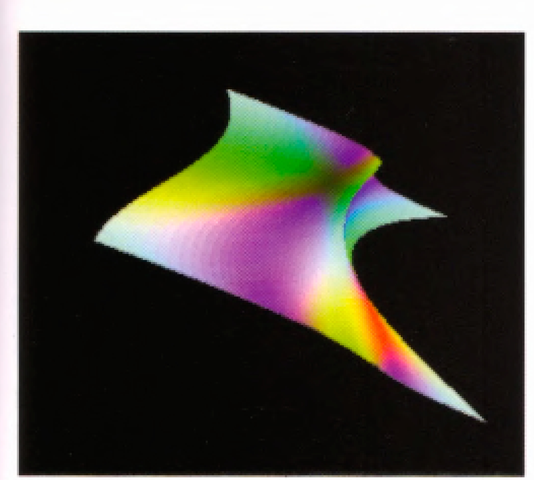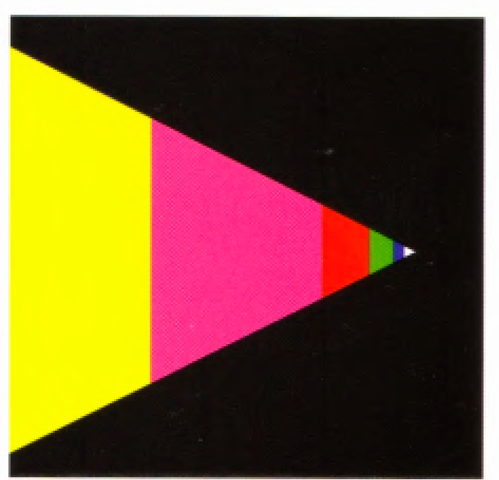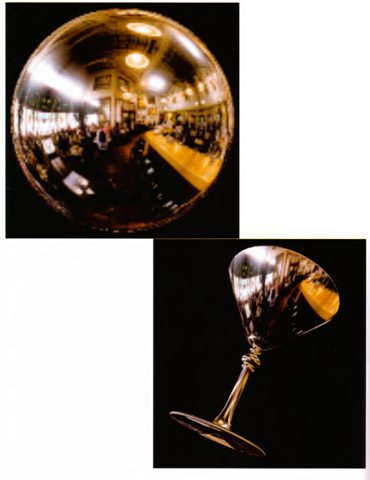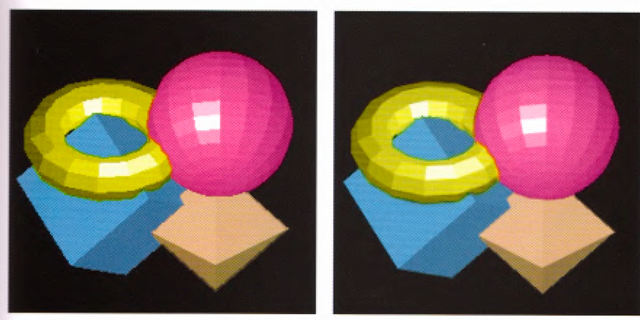Plate 14. Gray teapots drawn with different lighting conditions, (a) Each of the three teapots is drawn with increasing ambient light, (b) The teapots are clipped to expose their interiors. The top teapot uses one-sided lighting, the middle one uses two-sided lighting with the same material for both front and back faces, and the bottom teapot uses two-sided lighting and different materials for the front and back faces.
Plate 15. A lighted sphere drawn using color index mode.
Plate 16. Twelve spheres, each with different material parameters. The row properties are as labeled above. The first column uses a blue diffuse material color with no specular properties. The second column adds white specular reflection with a low shininess exponent. The third column uses a high shininess exponent and thus has a more concentrated highlight. The fourth column uses the blue diffuse color and, instead of specular reflection, adds an emissive component.
Plate 17. Lighted, smooth-shaded teapots drawn with different material properties that approximate real materials. The first column has materials that resemble (from top to bottom) emerald, jade, obsidian, pearl, ruby, and turquoise. The second column resembles brass, bronze, chrome, copper, gold, and silver. The third column represents various colors of plastic: black, cyan, green, red, white, and yellow. The fourth column is drawn with similar colors of rubber.
Plate 18. Lighted, green teapots drawn using automatic texture-coordinate generation and a red contour texture map. (a) The texture contour stripes are parallel to the plane x = 0, relative to the transformed object (that is, using GL_OBJECT_LINEAR). As the object moves, the texture appears to be attached to it. (b) A different planar equation (x + y + z = 0) is used, so the stripes have a different orientation, (c) The texture coordinates are calculated relative to eye coordinates and hence aren’t fixed to the object (GL_EYE_LINEAR). As the object moves, it appears to "swim" through the texture.
Plate 19. A texture-mapped Bezier surface mesh created using evaluators.
Plate 20. A single polygon drawn using a set of mipmapped textures. In this case, each texture is simply a different color. The polygon is actually a rectangle oriented so that it recedes into the distance, appearing to become progressively smaller. As the visible area of the polygon becomes smaller, correspondingly smaller mipmaps are used.
Plate 21. An environment-mapped object. On the left is the original texture, a processed photograph of a coffee shop in Palo Alto, taken with a very wide-angle lens. Below is a goblet with the environment map applied; because of the mapping, the goblet appears to reflect the coffee shop off its surface.
Plate 22. A scene with several flat-shaded objects. On the left, the scene is aliased. On the right, the accumulation buffer is used for scene antialiasing: the scene is rendered several times, each time jittered less than one pixel, and the images are accumulated and then averaged.
Plate 23. A magnification of the previous scenes. The left image shows the aliased, jagged edges. In the right image, the edges are blurred, or antialiased, and hence less jagged.
Plate 24. An architectural rendering using OpenGL. This is a rendering of a VRML scene using texture mapping for illumination control and stencil buffering.

